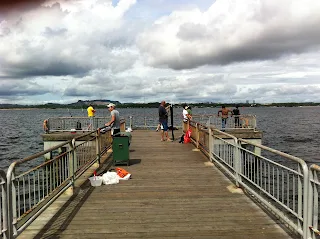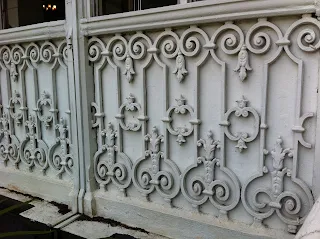Pongal or Sankaranthi is a thanksgiving festival for a good harvest, celebrated originally in Tamil Nadu, South India. It also heralds the auspicious month of Thai in the Hindu calendar. Boiling of milk in clay pots (pictured above) is one of the significant rituals carried out to celebrate abundance for a household. Notice that the pots all have painted mango leaves on their sides.
I had the opportunity to observe this festival in Singapore's Little India - Serangoon - one January week day.
Fresh ginger shoots are seen in a stall, perhaps reflecting the agricultural roots of this festival.
Purple coloured sugar cane are also made available amidst the varied produce and wares on offer. (above) The sugar cane is valued by the Fujian community of South China in celebrating the Lunar New Year, which often coincides with the Pongal Festival in Malaysia and Singapore.
Coconuts hold a very special place in an Hindu festival. Above image captures a display of young coconuts in their shell and some smeared with festive colourings. There are many stalls along Campbell Lane for the duration of this festival and it can be a sight to behold and discover.
Cattle symbolically honoured as acknowledgement for their toil on fields to help humans reap the benefits of a harvest. In Campbell Lane, Serangoon in Singapore, they are washed and had their horns painted. They were also garlanded with flowers, tinkling bells and multi-coloured beads.
Flower garlands, made from fresh blooms, are a requirement in any Indian festivals, together with fresh limes (picture above). Below, the main strip of Serangoon Road gets festive with colourful decorations hung overhead.














































